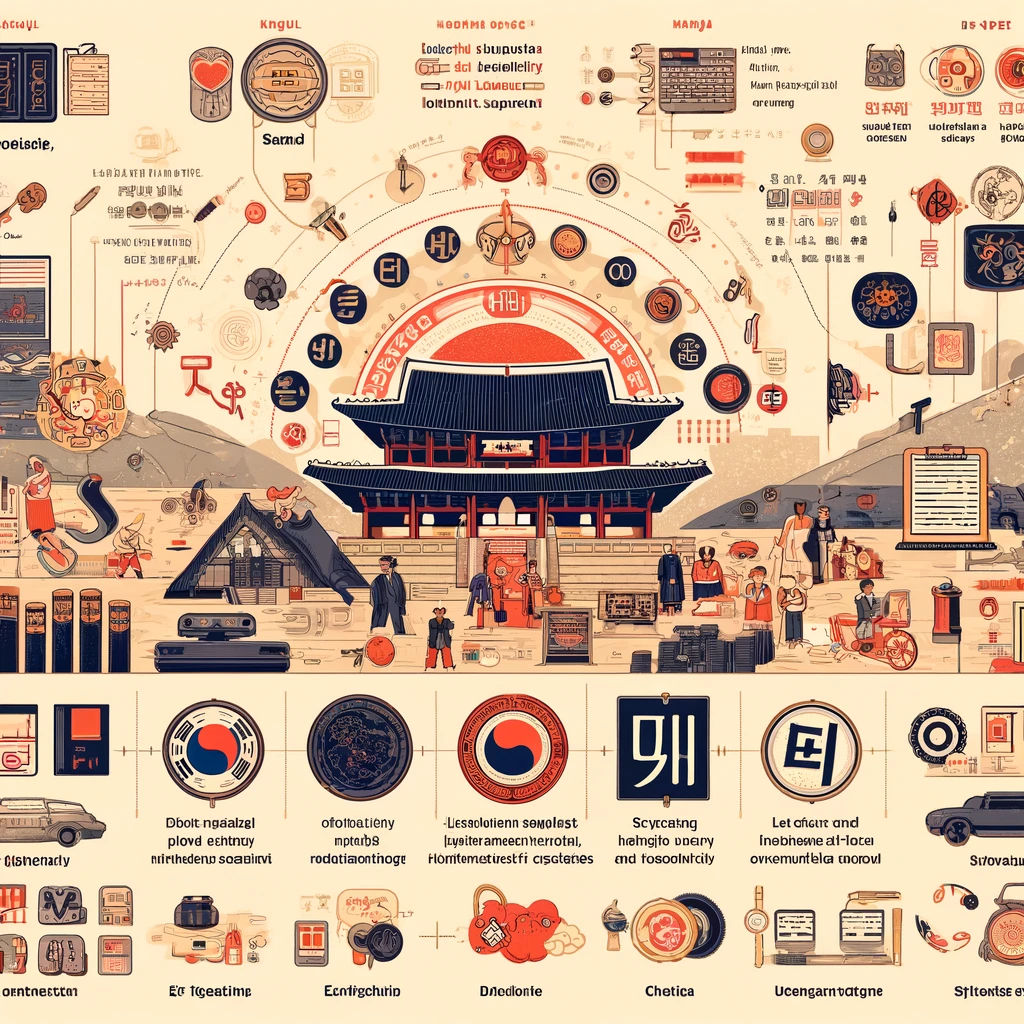목차
Hangul vs Hanja – Discuss the differences between Hangul and Hanja
The distinction between Hangul and Hanja in the Korean language encapsulates a fascinating journey through history, culture, and linguistic innovation. Both scripts have coexisted in Korean society for centuries, each serving distinct roles and reflecting different periods in Korea’s past. This discussion delves into the differences between Hangul and Hanja, their uses in modern Korean society, and the significant movement towards exclusive use of Hangul that marks a pivotal shift in the linguistic landscape of Korea.

Historical Context and Differences
Hangul is the native alphabet of the Korean language, created in the 15th century by King Sejong the Great and his team of scholars. Designed to be easy to learn and use, Hangul consists of 24 letters (14 consonants and 10 vowels) that can be combined into syllable blocks to form words. Its creation was motivated by the desire to provide a means of literacy to the common people, who found the existing script, Hanja, difficult to learn due to its complexity.
Hanja refers to the Chinese characters that were used in Korea before the creation of Hangul. These characters were borrowed from Chinese and adapted to Korean usage, representing words or concepts rather than sounds. Hanja was the dominant written script in Korea for centuries, utilized in official documents, literature, and scholarly works. However, its use necessitated years of study, effectively limiting literacy and scholarly pursuits to the aristocracy and the male elite.
Differences in Usage
The key difference between Hangul and Hanja lies in their nature and functionality. Hangul is a phonetic alphabet, meaning each letter represents a sound, and it can accurately represent the pronunciation of Korean words. Hanja, on the other hand, is logographic, with each character representing a word or an idea. This fundamental difference influences how each script is used and learned.
Modern Usage
In modern Korean, Hangul is the predominant script, used exclusively in most written communications, literature, education, and media. The shift towards Hangul-exclusive use reflects a broader trend towards simplification and democratization of language, making literacy and education more accessible to the entire population.
Hanja remains a part of Korean education but to a much lesser extent. It is taught primarily for the purpose of understanding classical literature, cultural heritage, and specific terms in fields like law, history, and religious studies where traditional terminology is still prevalent. Additionally, Hanja is occasionally used in newspapers and official documents to clarify specific terms that may have multiple meanings in Hangul or to lend a certain gravitas or formality to the text.
Movement Towards Hangul-exclusive Use
The movement towards Hangul-exclusive use has been driven by several factors:
Accessibility and Literacy: Hangul’s simplicity and ease of learning have significantly contributed to high literacy rates in Korea. Its use supports the government’s efforts to ensure that education is accessible to all segments of the population.
National Identity: Hangul is uniquely Korean, developed specifically to represent the sounds of the Korean language. Its promotion is tied to national pride and cultural identity, distinguishing Korean heritage and language from Chinese influences.
Technological and Global Integration: The digital age and globalization have necessitated a writing system that is efficient and adaptable to technology. Hangul’s straightforward phonetic system fits well with digital communication and has facilitated Korea’s rapid advancement in technology and its integration into the global community.
Conclusion
The transition from a mixed script system to Hangul-exclusive use in Korea is not merely a linguistic shift but a reflection of deeper social, cultural, and technological evolutions. While Hangul has taken precedence in all aspects of Korean life, Hanja continues to hold a place in the cultural and historical fabric of the nation. This movement towards Hangul-exclusive use underscores the importance of language as a tool for education, cultural identity, and societal progress. As Korea continues to evolve, the roles of Hangul and Hanja will undoubtedly continue to reflect the changing values and priorities of Korean society.
Go Blog Home
